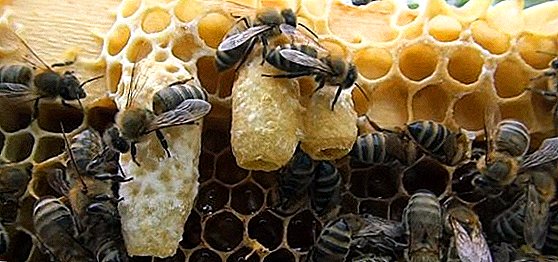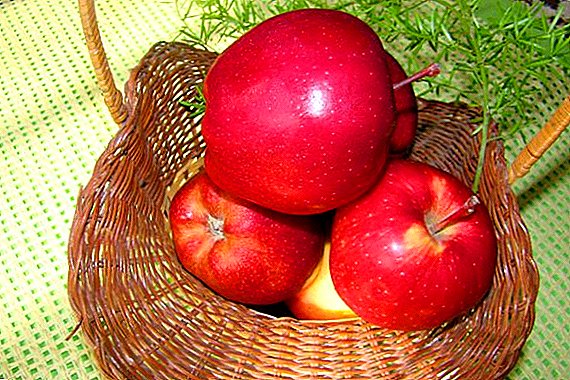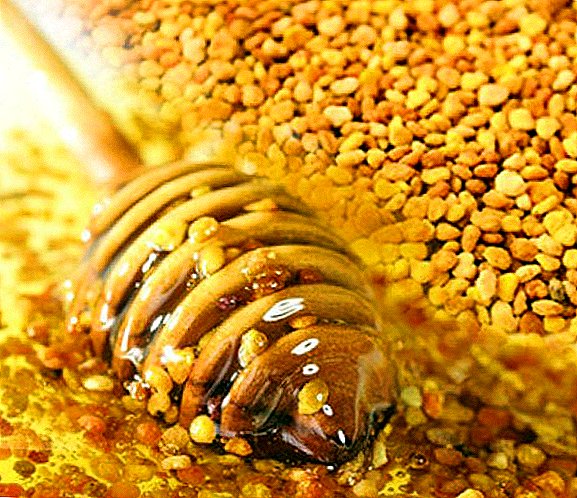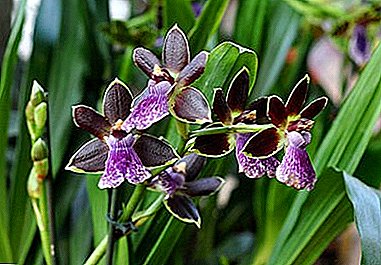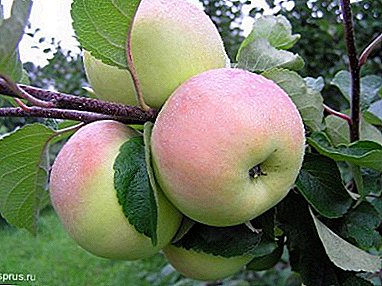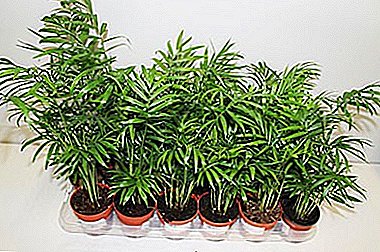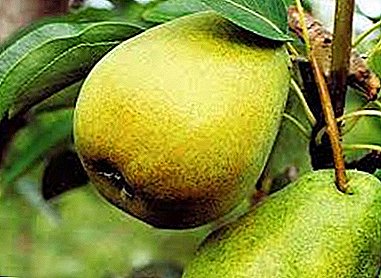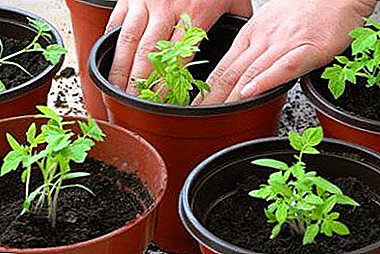
While the evil blizzard is struggling with young spring for its rights, the window sills of gardeners are already wildly green with young shoots.
Tender shoots are drawn to the light, pots, soil, fertilizers are prepared. Ahead - picks. In this article, we will try to tell you simply and in sufficient detail about what this picking procedure is.
You will learn how to care for young tomatoes after a pick, what problems you may encounter and, of course, how to solve them.
What happens to the saplings after a dive?
In order to answer this question and understand what kind of care such plants require, let's define what a pick is?
reference. Transplanting seedlings from common containers into individual pots or from a smaller container to a large one is called a pick.
According to gardeners, diving contributes to the development of roots. After a properly performed procedure, tomatoes feel good, but are stressed. Some of them in the new place may not take root. Sprouts have a weak root system, and picking should be done very carefully. Minor damage to the roots leads to the death of the young seedling.
Therefore, the time from picking to planting in the ground should be used to strengthen the immunity of seedlings, give them strength to grow and carry out preventive measures against diseases of tomato cultures.
Growing conditions and care after transplantation
Immediately after transplanting, seedlings need to be watered., so that the soil is evenly wrapped around the roots, and remove the seedlings in a shaded wet place for two or three days. This is the period of adaptation of the seedling to a new place.
 The recipe for growing tomato seedlings is to respect the temperature and light conditions, timely and sufficient watering, feeding and hardening.
The recipe for growing tomato seedlings is to respect the temperature and light conditions, timely and sufficient watering, feeding and hardening.
- The optimum temperature for growing seedlings is 16 - 18 ° C during the day; at night 14 - 15 ° С.
- Lighting is best supplemented with phytolamps, especially during cloudy times. Light day at seedlings should last 12-14 hours. The lamp should be on top for uniform illumination of all seedlings. To prevent the seedlings from being pulled out to daylight, it is necessary to expose different sides of the seedlings to the sun.
- It is recommended to feed seedlings three times:
- The first time is not earlier than in a week - two after the pick. If the soil was prepared independently, then it is fertilized with ashes. If the seedlings were transplanted into the purchased ready-made soil, then it is initially supplied with all the microelements. During this period, seedlings begin to actively grow the leaves, and they need additional nutrition with nitrogen and phosphorus (Superphosphate). If the shoots are elongated, then nitrogen should be excluded.
- The second feeding is carried out in two weeks from the first organic fertilizers (compost, humates, chicken dung, cow dung).
- The third dressing is made two weeks before planting in open ground or a greenhouse with mineral fertilizers. Attention should be paid to potassium, contributing to the formation of flower ovaries.
For preventive purposes, you can water the seedlings not with ordinary water, but with a weak solution of humate. One teaspoon of the substance is mixed with a small amount of boiling water. The mass is diluted with two liters of water. This concentrate can be stored for a long time. For watering 100ml concentrate diluted in one liter of water, and is used for a single use.
- Hardening of plants is carried out after feeding in two weeks before planting in the ground. The seedlings are placed first to the glass itself, where it is cooler a couple of degrees. A few days later open the vents. And at the third stage they take it out to the balcony first for 2-3 hours and then for the whole day.
Then you can watch a video on how to care for seedlings after picking:
Possible problems
Pests and bacteria that cause diseases of tomatoes, may already be contained in the soil, or get on seedlings from other indoor plants.
Why fade?
Adaptation
Since picking up plants for stress, then slightly faded leaves in a couple of days will get their original shape. At this point, they can be poured with a stronger solution of humate and treated with Epin foliage.
Low or high temperature, drafts
Tomatoes - thermophilic culture. Therefore, it is very sensitive to temperature changes. The ideal temperature is 18 ° C during the day and a few degrees lower at night. Seedlings fade directly near the window glass, where it is always colder.
Tomatoes do not tolerate drafts, so before putting the seedlings on the windowsill, seal all the gaps in the frames. If the leaves wither and curl, it suggests that the tomatoes suffered a sharp temperature drop. The roots, being in a limited space, cannot nourish all the leaves in the heat. And when cooling, the roots no longer absorb trace elements from the soil.
Unbalanced soil
If the leaves of seedlings become shallow and yellow, and the veins remain green, then the plant lacks nitrogen. It is not recommended to feed with one nitrogen in order to prevent the seedling from pulling out. Feed should be a full range of minerals. An excess of minerals leads to a burn of the root and the formation of a crust on the surface of the soil. This prevents access of oxygen to the roots. It is necessary to remove the crust formed and pour a solution of humate.
Lack or excess of light
 In low light, photosynthesis stops.. The plant languishes and turns yellow. It is recommended to arrange the plants in order to maximize access to each seedling of daylight, and to add additional lighting.
In low light, photosynthesis stops.. The plant languishes and turns yellow. It is recommended to arrange the plants in order to maximize access to each seedling of daylight, and to add additional lighting.
An excess of light causes leaf burn, yellowing and fading. The access of nutrients from the soil occurs in the dark. Therefore, you should adjust the light mode.
Wrong watering
Overflowing seedlings at low ambient and substrate temperatures leads to diseases like rot. Sick seedlings can not be saved. The leaves turn yellow and fall, the seedling rots and falls. You need to quickly transplant healthy seedlings to new soil.. Before transplanting, process roots with potassium permanganate.
The overdried earthen room also leads to the withering of the plant.
The soil should remain wet inside, and the surface layer should have time to dry. Also it is worth checking whether the drainage holes are blocked.
Fusarium
If the soil was not decontaminated before picking, the cause of seedling wilt is fusarium - a fungal disease that affects the vascular system of the plant.
Lower leaves yellow, then the entire seedling. If the plant is not completely yellow, it is transplanted into the disinfected soil.. If whole, then it is removed so as not to infect the rest of the seedlings.
Why not grow?
Incorrect dive
This is one of the most common reasons for stunting tomato seedlings. Damage to the root system of a plant during transplantation, tearing off of the roots or their bend, as well as the appearance of air cavities around the roots prevent the root system from taking root and developing in a new place. It is recommended to feed growth.
Unprepared ground
Dense acidic soil leads to stunting. Seedlings should be transplanted into a balanced loose soil. The absence of such a trace element as iron also delays the development of seedlings. Fertilizing with microelements is required.
Temperature conditions
Initially, the low temperature of the soil does not allow getting food from the soil, which leads to a growth arrest.
Diseases and pests
 Spider mite, spread from other indoor plants, is able to slow down the active growth of seedlings. To combat it, treat the plant with karbofos, aktellik and fitoverm.
Spider mite, spread from other indoor plants, is able to slow down the active growth of seedlings. To combat it, treat the plant with karbofos, aktellik and fitoverm.
Root or radical rot will stop the growth of seedlings, if the plant is not transplanted in time, dipping the pre-roots of the plant in a solution of manganese.
For any problems, diseases of tomatoes, as well as for preventive purposes, use a solution of humate for irrigation.
What reason is falling?
Bad light
The lack of light in conditions of large crowding of seedlings, as well as uneven lighting (only on one side) will lead to the fact that the plants in search of light, will begin to stretch. The stalk becomes thinner and the seedlings fall under the weight of the leaves. It is necessary to normalize the light regime and arrange the plants.. It is also possible to install foil screens in front of the window.
Unbalanced land
The plants overfed with nitrogen give a booming growth of tops, and it is strongly drawn out.
Diseases
Frequent disease of tomato seedlings - black leg. The stem begins to turn black, thin, the plant falls and dies.
Attention! The disease is swift, capable of killing all the seedlings in a short period.
Infected plants are immediately removed. The soil is watered with a pink solution of potassium permanganate, Fitosporin, Alirin. After that, tomatoes do not need to be watered for a week, the soil should dry.
As you can see, a thorough preparation and the correct picking carried out will save you a lot of energy, nerves and time in the future and take great pleasure in collecting the fruits of your labor. Preventive measures will help to avoid disease and death of seedlings. Pay attention to the seed material. It is the high quality of seeds that is the guarantee of a rich harvest!


